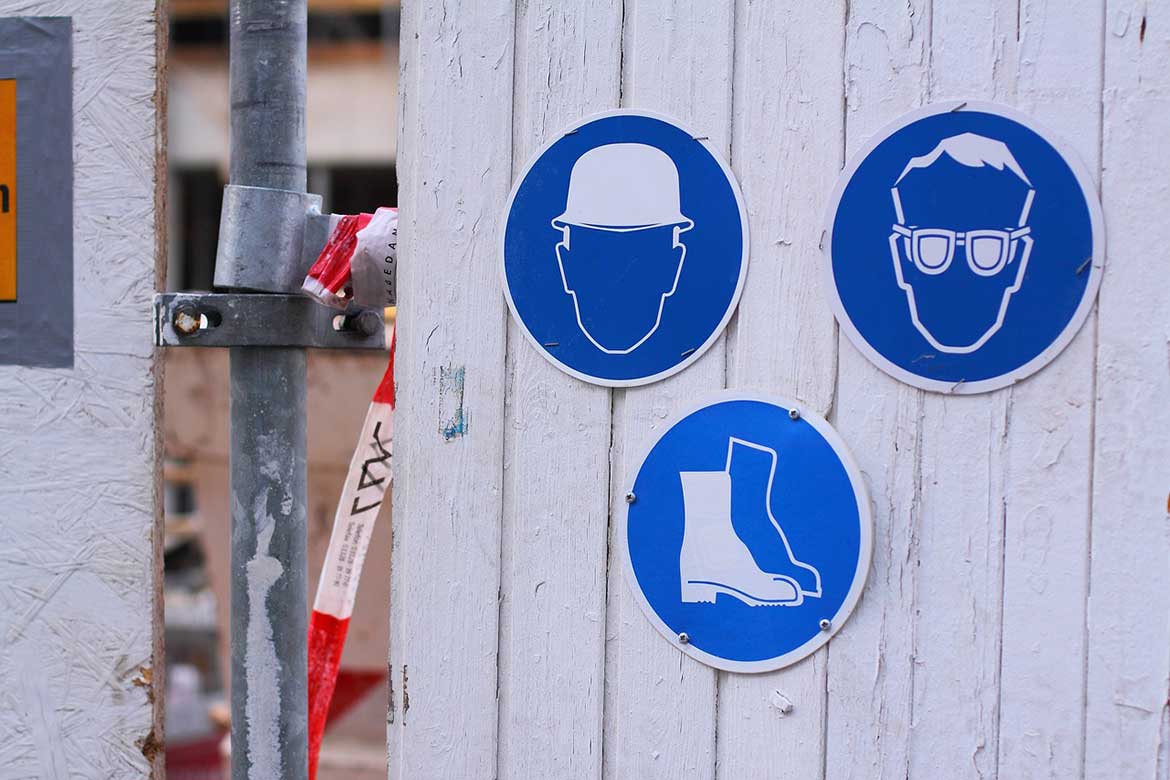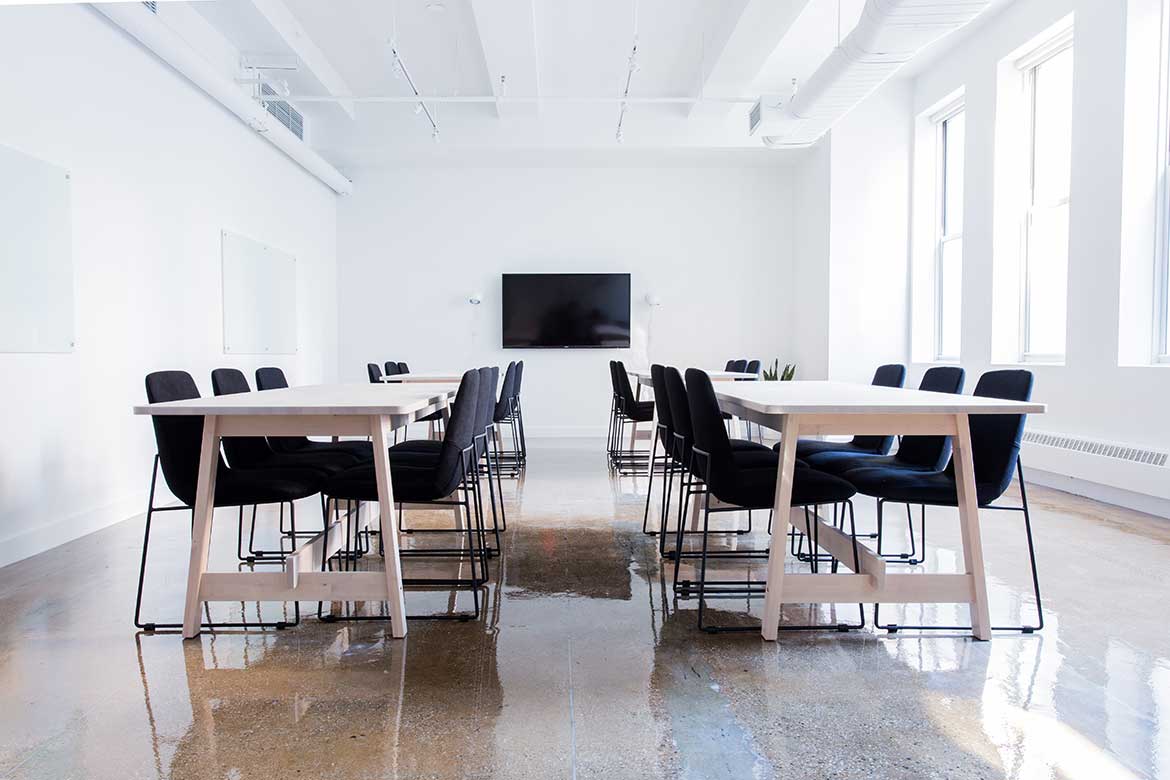27th August, 2020
11 Free Ways To Improve Construction Site Safety
Don't think you have the budget or resources to improve health and safety on your construction site? Think again! The good news is many health and safety measures can be implemented for free (or low cost). In this post, we will give you 11 free ways you can create a safer site.

Don't think you have the budget or resources to improve health and safety on your construction site? Think again! The good news is many health and safety measures can be implemented for free (or low cost). In this post, we will give you 11 free ways you can create a safer site.
In construction, a good health and safety record is essential for growing your business, protecting your workforce, gaining accreditation, getting on tender lists and winning more work. But with profit margins on construction projects often tight, smaller contractors and sometimes larger construction firms just don’t have a big budget and loads of resources to dedicate to health and safety.
But health and safety actions don't have to eat into your profits. In fact, the return on investment for health and safety measures usually means bigger profits for your business. And even low or no cost health and safety measures can help you create a positive health and safety culture on site.
Safety will always be a hot topic in construction. Construction is a high hazard industry and far too many people are killed or seriously injured on sites each year. Not only is safety a priority to prevent your workforce from being killed or harmed, but it is also a priority for your business profits and growth.

The impact of a site accident is significant to businesses. Large companies with big investors and significant profits can often absorb the costs associated with accidents, but they can still have a lasting impact. The loss of productivity and morale, insurance and fines, loss of reputation and clients.
Smaller companies take the financial hit harder, particularly rising insurance costs, fines and replacing staff. Smaller companies will also take the emotional hit harder, as usually the entire workforce will be affected by the harm or loss of a co-worker.
If you’re reading this post, then safety clearly is a priority for your organisation. But, if you haven’t got much of a budget, you may feel you have to choose between health and safety and staying in business. Over the longer term, it's important to remember that health and safety can save you money. And the good news is, you often don't need a big budget to improve safety on your sites, and many health and safety measures can be implemented for free (or at a low cost).
Here are 11 free or low-cost ideas to improve construction site safety on a budget:
1. Inductions
Inductions are a legal requirement on construction sites, so the first item on our isn't so much of an idea or an option, but a must-have. But it's still worth mentioning because a surprising number of construction workers don't get a suitable induction on every site.
Your site inductions don't need to be fancy, and they cost nothing but your time. Take the time to explain the hazards and risks that your team will be facing on the site, the site rules, and how to work safely. Every site is different, and with construction workers moving about from site to site, they may not be familiar with this site and these hazards. This initial briefing at the start will reduce the risk of any nasty surprises later.
Find out what to include in your construction site induction, and use our construction site induction checklist to keep a record.
2. Toolbox talks
Daily or weekly toolbox talks covering relevant site hazards and activities can help raise awareness of health and safety topics on site. These quick health and safety talks are valuable to both operatives and management, giving everyone the opportunity to ask questions and provide feedback.

The purpose of your toolbox talks should be to keep health and safety fresh in the minds of your team and to provide an open environment in which the issues raised can be explored and addressed. Each talk should focus on a single health and safety subject, and be used to deliver important health and safety information to your workforce on site.
** There are lots of toolbox talk topics you can choose from. Here's 30 free toolbox talks for construction to get you started!**
3. Document checks
One of the biggest differences between small contractor’s and large contractor’s safety management on site is paperwork. Smaller contractors tend to use more informal processes to appoint subcontractors and manage works on site.
While paperwork alone won’t improve safety, effective procedures will, and often these need to be communicated on paper. Formal signing in sheets, induction sheets, checks and inspections will allow information to be easily accessed, distributed to those who need it and provide a record that you’re complying with your legal requirements.
Need help with paperwork? Get started on the HASpod free plan and quickly create your health and safety documents.
4. Near miss reporting
Near misses are events that could have resulted in an injury, but through quick reactions or a lucky escape, no injury occurred. If a near miss is ignored, it is likely that eventually, an accident will occur. Heinrichs accident triangle and a further study in 1966 showed that for every 15 near misses there will be an accident.
You can implement a near-miss reporting system on a shoestring budget, just with a simple near miss report form and by asking the workforce to report any near misses to the site manager.
By assessing near misses, and putting control measures in place to prevent them reoccurring, you can reduce the likelihood of it happening again. Next time, you might not be so lucky.
5. Housekeeping rota
Tidying up doesn't cost much. It takes a little time to do but saves a lot of time because things are organised and routes are clear. Good housekeeping is important in any workplace, but particularly on construction sites where there is a lot of manual handling of materials, tools and equipment and waste produced. A tidy site will reduce trip hazards and also fire risks.
Smaller companies or sites may not have a site labourer with the dedicated job of keeping the site tidy. This can often lead to tradesmen concentrating on their particular work activity with no one taking responsibility for site cleaning. A clear up rota distributes the responsibility for site tidy up and helps keep the site free from unnecessary slip and trip hazards.

6. Plan for safety
Good planning prior to project commencement is key to reducing risks on site. Poor planning can lead to high pressure on site, with the workforce having to rush to meet unrealistic deadlines, which can often lead to accidents.
Think about safety when planning the work, coordinate with other trades who may also affect the safety of the work being carried out. Good planning also clearly allocates responsibilities to the project team so each member knows what is expected of them.
7. Safety meetings
Weekly safety meetings on the site can be used to discuss any safety issues and come up with solutions. These meetings are a good way for site management to get feedback from the workforce, who may be able to highlight site hazards or issues with procedures that have been missed.
You can use these meetings to discuss any near misses that have occurred, and action resulting to prevent reoccurrence. To discuss any other safety failings, and also to give praise for health and safety achievements, such as accident / near miss free weeks and a tidy site.
8. Safety inspections
You may not have the budget for a designated safety manager or external consultant to carry out a safety inspection, but this doesn’t mean you can’t do one. A site safety inspection can be carried out by your site manager or a supervisor once a week to pick up any bad practices or unsafe conditions.

9. On the job training
One of the legal health and safety responsibilities of employers is to provide suitable instruction and training. If you haven’t got the budget for external training, what about pairing up experienced members of staff with new recruits or younger members of the team?
Members of the workforce that have been in the industry for many years are likely to be far more hazard aware and less likely to take risks. Through working with others with less experience they can pick up any unsafe practices and highlight hazards specific to the work undertaken.
10. Healthy eating
Healthy eating is of course, good for general health, but can it really help construction site safety? Results from trials say yes! A study from the Olympic Delivery Authority showed that accident levels were highest in the hour before lunch when workers were hungry. They provided porridge for breakfast and accident levels reduced.
It might seem elementary, but the employees were more concerned about when they could eat lunch and what they were going to eat instead of focusing on the job at hand.
Before you start calculating how much x-number bowls of porridge is going to cost you over the course of the project, they charged workers £1 a bowl to cover expenses.
11. Talk is cheap
Effective communication on site is important to raise awareness of safety initiatives, rules and make sure they are understood by everybody. Communication takes place on construction sites in a variety of formats including informal talks, meetings, posters, documents, memos, hand signals, and, warning signs.
Each communication has a purpose - to deliver a message. Review your current communication processes and check that the message your sending is understood when delivered. If messages are confused or not understood, small changes and consultation with your workforce can help keep health and safety messages clear, simple, and most importantly, understood.
Have you implemented any no or low-cost health and safety initiatives on your site? Let us know how you got on, and get your business featured in our article!
This article was written by Emma at HASpod. Emma has over 10 years experience in health and safety and BSc (Hons) Construction Management. She is NEBOSH qualified and Tech IOSH.
Need health and safety documents?
Search hundreds of health and safety documents ready to edit and download for your construction projects.
Find DocumentsRecent posts like this...

CSCS Cards, The Law, And Working On Construction Sites
If you work in construction, you've probably heard of CSCS. You might have a CSCS card. As an employer, you might want your workers to get CSCS cards, or wondering if they should. As a worker, you may also be wondering if you need a CSCS card. So let's take a look at the law surrounding CSCS cards.
Read Post
20 Tips For Better Construction Site Security
Site security is an important issue in construction. Your site could be at risk from thieves and vandals, but it could also appear to be an exciting place for children or a shortcut for someone's way home. Here are 20 tips for better construction site security.
Read Post
Construction Noise And Working Hours Near Residential Areas
The law does not limit noise to certain hours, but between 11 pm to 7 am councils can enforce restricted permitted noise levels. Construction work ideally shouldn't be carried out during these hours, especially close to residential areas, but there can be exceptions.
Read Post